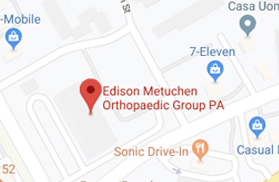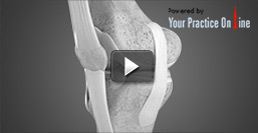Lumbar Microdiscectomy
Microdiscectomy is a surgical procedure employed to relieve the pressure over the spinal cord and/or nerve roots, caused by a ruptured (herniated) intervertebral disc. A herniated disc, common in the lower back (lumbar spine) occurs when the inner gelatinous substance of the disc escapes through a tear in the outer, fibrous ring (annulus fibrosis). This may compress the spinal cord or the surrounding nerves, resulting in pain, sensory changes, or weakness in the lower extremities.
It is usually indicated in patients with herniated lumbar disc, who have not found adequate pain relief with conservative treatment. This procedure involves the use of microsurgical techniques to gain access to the lumbar spine. Only a small portion of the herniated disc that compresses the spinal nerve is removed.
Procedure
A microdiscectomy is performed under general anesthesia. Your surgeon will make a small incision in the midline over your lower back. Through this incision, a series of progressively larger tubes are placed and positioned over the herniated disc. The affected nerve root is then identified. Your surgeon removes a small portion of the bony structure or disc material that is pressing on the spinal nerve using microsurgical techniques. The incisions are closed with absorbable sutures and covered with a dressing.
Postoperative Care
Following the surgery, patients will be discharged home on the same day or the next day. Post-operatively, patients are advised to gradually increase their activity levels. If required, physical therapy is started after four to six weeks of the surgery to improve strength and range of motion.
Benefits of micro discectomy include:
- Less muscle and soft tissue disruption
- Shorter recovery time
- Minimal postoperative pain and discomfort
- Fewer risks of complications
Other Spine List
- Normal Anatomy of the Spine
- Back Pain
- Neck Pain
- Spine Trauma
- Vertebral Fractures
- Spine Injections
- Spinal Deformity Surgery
- Posterior Lumbar Decompression with Fusion
- Spinal Cord Stimulator
- Anterior Cervical Decompression with Fusion
- Corpectomy
- Kyphoplasty
- SI joint fusion
- Oblique Lumbar Interbody Fusion
- Direct Lateral Interbody Fusion
- Interlaminar Lumbar Instrumented Fusion
- Minimal Access Surgical Technology Transforaminal Lumbar Interbody Fusion
- Lumbar Epidural Steroid Injection
- Laminectomy (Cervical) with Fusion
- Posterior Lumbar Interbody Fusion
- Peripheral Nerve Surgery
 Menu
Menu






